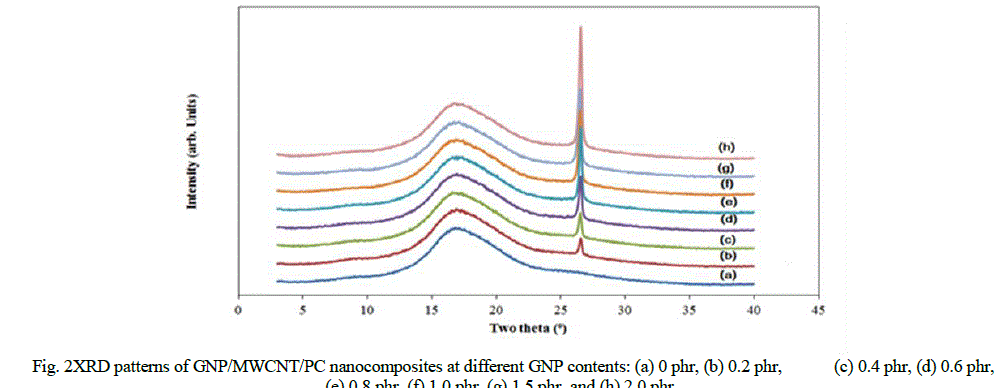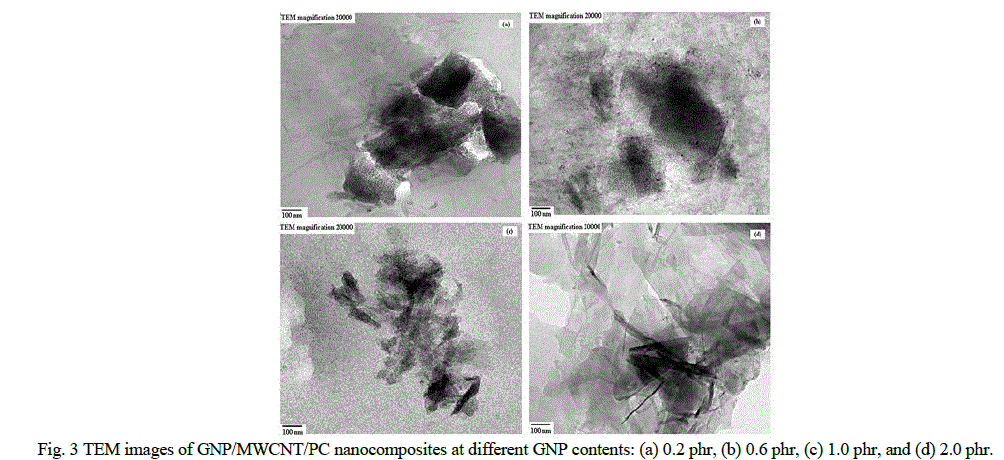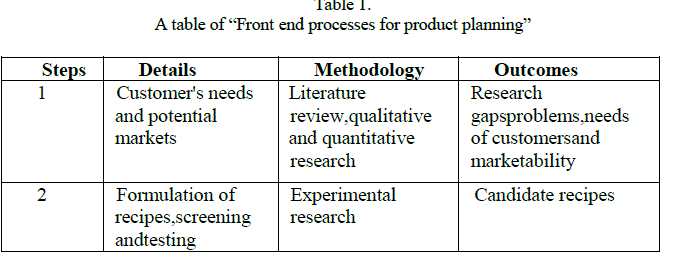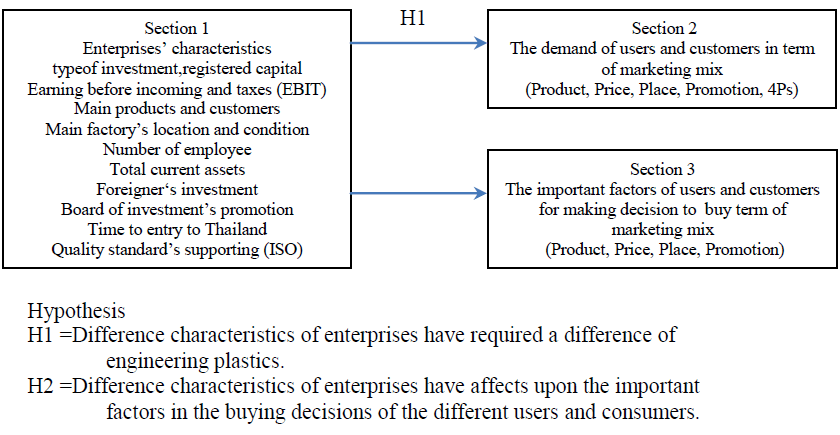ISSN ONLINE(2319-8753)PRINT(2347-6710)
ISSN ONLINE(2319-8753)PRINT(2347-6710)
Akkachai Poosala1, Darunee Aussawasathien2*, Duanghathai Pentrakoon3*,Achara Chandrachai4*
|
| Related article at Pubmed, Scholar Google |
Visit for more related articles at International Journal of Innovative Research in Science, Engineering and Technology
The conceptualization of new polymer compounding, for use in anti-electrostatic product innovation development, consists of five sub-phases which include; finding market demands and potential users, conducting preliminary scientific experiment so as to achieve the best possible compound recipes, conducting an upscale of the compound recipes for industrial prospect, assessing technology acceptance using technology acceptance methods (TAM) and, finally assessing a potential for business commercialization. Some key activities were studied in the front end research, for example, literature reviews, the methodologies of quantitative performed in front end research findings about market demands and capabilities, polymeric composites laboratory testing for finding the types and dosage amounts of graphene to be administered. In addition, the product concepts were frequently developed in parallel that require specifications of the physical, conductive and structural properties. These findings have implications for increasing the success and the qualities of front end efforts for composites of excellence.
Keywords |
| Front End, Product Innovation, Electrostatic Discharge (ESD), Polycarbonate/Graphene Composite |
INTRODUCTION |
| For over half a century,solutions to electrostatic discharge have been tried to be addressed [1]-[3]. Direct and indirect items that need anti-static property inclusive materials have been considered and applied, such as dresses, shoes and gloves, as well as composite materials for electronic component packaging. Thermoplastic polymers are now widely used in this field which include; polyethylene terephthalate (PET) and polystyrene (PS), primarily because of their high physical and mechanical properties [4],[5]. However polycarbonate (PC) is a material that has good properties and is an economical polymer which is the most suitablebeing be used as a polymer matrix applied for composites [6]-[9]. Although there have been several product developments that temporarily solved electrostatic problems [10] such as; antistatic coatings, conductive fillers like carbon fibres (CF) and carbon nanotubes (CNT). They all continually faced problems such as âÃâ¬Ãâflaking off‘ and their âÃâ¬Ãâlife time of coating‘ [1],[10]-[14], and additionally we have to add the contamination of carbon power [15]-[18]. From that point of references, we can see that the front end has attracted considerable attention from previous scholars. For polymeric research, pertaining to conceptual ideas for the formulation of designs and molecular rheology properties, and statistical designs were investigated for development [19]-[21]. However, the front end research has never been done in other fields [22],and research on the front end of polymer composites is non-existent. This research deficit is surprising, in light of the specific values of conducting in-depth studies of the front end polymer composites. The remainder of this journal is organized as can be seen, in that we shall review previous literature in order to lay strong foundations for our theoretical findings, as the research design process is described and that itself leading to a section providing key results. |
THEORETICAL BACKGROUND AND RELATED WORK |
| The theoretical background is split into four sub-sections as following. |
| A. Electrostatic Discharge |
| Electrostatic charge is initiated by an inequitable amount of positive and negative electrical charge. As the result, the suction and repelling forces against each other create sparking and an accumulation of dust occurs. That affects electronic components adversely, with regards to cleanliness [23]-[25]. Nowadays, assembled parts, especially electronic components such as hard drives, are almost all produced in a âÃâ¬Ãâclean room‘, owing to the need to control the transfer of static electricity in order to avoid damage to the electronic components in the manufacturing process [26]. Damage to electronic components is caused by the transfer of static electricity. It can be represented by 6 modes, as follows [27]. Firstly, the human body model (HBM) is the electrostatic transfer from the human body to specimen. This model is the most popular and the most common occurrence, and has been applied in educational research [28]-[30]. Secondly, the charged device model (CDM) is the transfer of static electricity from equipment or specimens to the tools [28]. Thirdly, the machine model (MM) is the model that observes the transfer of static electricity from the tool or machine to the specimen [30]. Fourthly, field induced model (FIM) is the model of the transfer of static electricity caused by the induction of an electric field close to the specimen [31]. Finally, the capacitive coupled model (CCM) is caused by a reduction in the electrostatic capacitor‘s performance [32]. From the past to present, there are four main guidelines for anti-electrostatics [27],[33], [34]. Primarily, the main method is to design and develop electronic components and tools to possess anti-electrostatic properties. Secondly, another method is to avoid the electrical charge and to reduce or eliminate the causes of static electricity in production and transportation. For example; the use of plastic floor tiles [35], [36], the controlling the humidity of the air in rooms, and non-standard chairs, shoes and clothes [37], [38]. Thirdly, an additional method is in transferring electric charge to the grounding system as soon as possible, so as to minimize the charge accumulation within systems and anti-lightning conductors (lightning protection) [39]. Finally, that is the prevention of disturbances from electric fields (shielding). |
| B. Graphene and Polymer/GrapheneComposites |
| Graphene is composed of a planar monolayer of conjugated sp2 carbon atoms bonded into six-membered rings that are densely packed into a honeycomb crystal lattice. It is the thinnest material discovered in the world with a single layer thickness to be less than 1 nm, with tremendous application potentials [40], [41]. A graphene sheet can be varied from tens of nanometers to centimeters in width. Graphene is predicted to have remarkable properties, such as high thermal conductivity, superior mechanical properties and excellent electronic transportation properties [42]-[46]. These intrinsic properties of graphene have generated enormous interest for its possible implementation in a myriad of devices. These include future generations of high speed and radio frequency logic devices, thermally and electrically conducting reinforced nanocomposites, ultra-thin carbon films, electronic circuits, sensors, and transparent and flexible electrodes for displays and solar cells [47]-[61]. Graphene, as a nanofiller, may be preferred over other conventional nanofillers: Na-Montmorillonite (Na- MMT), Lactate Dehydrogenase (LDH), CNT, CNF, expandable graphite (EG) etc. owing to high surface area, aspect ratio, tensile strength (TS), thermal conductivity and electrical conductivity, electromagnetic interference (EMI) shielding ability, flexibility, transparency, and low coefficient of thermal expansion (CTE)[42],[46], [62]. The mechanism for the interaction in polymer graphenenanocomposites depends on the polarity, molecular weight, hydrophobicity, reactive groups, etc., present in the polymer,graphene/graphite and solvent [63]. There are four main strategies for incorporating the polymer at the core of the host-layered materials; in-situ interactive polymerisation, solution intercalation, melt blending and a combination of mixing techniques. C. New Products and Innovation Development and Planning In the past, new product creation and development became innovative, starting from the existence of products, and at the same time having to consider investment costs, amortisation times versus returns, etc. , but neglected the consumer demands or market capabilities [64]. Therefore, unsuccessful products and innovations occurred. Recently, customer demands and market opportunities have been investigated and studied, before making the next steps in the process, as a result of progress in technological advancements and global marketing [65], [66]. Thus, pricing, distribution channels and promotional offers will all be examined. Good product design is one of the most important criteria for new products and innovative development. A product‘s configuration consists of; product properties, the level of product, the management of the product and the relationships of organisation [67]. In this research, it consists of three main phases; polymer matrix, type of graphene and the strategies of compounding. The prominent properties of an innovative product [68] consist of the designer‘s techniques, robustness of design [69], modular design [70], computer aided design (CAD) [71], computer aided manufacturing (CAM) [71]- [73] and the characteristics of the technologies used [74] such as raw materials, a product‘s quality, a product‘s warranty program, a product‘s listing of varieties and serviceability [75]. Moreover, process development and product management means creating, organizing, planning, and planning analysis in order to propose new products that meet the needs and demands of âÃâ¬Ãâcustomer satisfaction‘, all whist achieving the objectives of the organisation [76]. In addition, an effective product strategy must be proven in the relationship between the decisions of investment and market life cycle [77]. The variation of specifications of a product being offered must also take into account the capabilities of the production line as well as making a successful product, and having an advantage against competitors in the same field, will require product development teams. As a result, we synthesise three concept designs from three ideas which comprise; Cooper [78], the Stage-GateTMmodel, Dieter and Schmidt [79], the engineering innovated product development model, and Haines [67], innovated product management. In addition, Demaid andSpedding [80] reported upon the classification of polymer materials and the mixing methodology. Ljungberg [81], and Acevesand Sutcliffe [82] revealed the selection methodology for polymer composites by design for manufacturing and assembly (DFMA), design for disassembly(DFDA), design for service (DFS), design for recycling (DFR) and design for the environment (DFE ) while Shanan and Savadogo [83] studied and succeeded in creating the specific model, namely âÃâ¬ÃâELECTRE‘ or âÃâ¬ÃâElimination Et ChoixTraduisant La Realité‘, which translated from French means âÃâ¬Ãâthe elimination and choice expressing reality. It is model for the front end generation and evaluation of typical materials. |
| D.Marketing and Organisational Marketing |
| Well organised markets usually have fewer buyers, but they purchase in far greater amounts than general consumer markets, and are more geographically concentrated. Organised markets are divided into four main components, those being; industrial markets, which include individuals and companies that buy goods and services in order to produce secondary goods and services [84]; resale markets, which consist of individuals or companies that purchase goods and services produced by others for resale to consumers; government markets, which consist of government agencies at all levels, that purchase goods and services for carrying out functions of government; and institutional markets, which consist of individuals and companies, such as schools or hospitals, that purchase goods and services for the benefit or use of persons cared for by the institution. In addition, business-to-business (B2B) describes commerce transactions between businesses, such as between a manufacturer and a wholesaler, or between a wholesaler and a retailer[85] or non-profit organization [86]-[89] . Contrasting terms are business-to-consumer (B2C), and business-to-government (B2G). B2B branding is a term used in marketing spheres. The overall volume of B2B (Business-to-Business) transactions is much higher than the volume of B2C transactions. The primary reason for this is that in a typical supply chain there will be many B2B transactions involving sub components or raw materials, and only one B2C transaction, specifically sales of the finished product to the end consumer. As an example, an automobile manufacturer makes several B2B transactions, such as buying tires, glass for windscreens, and rubber hoses for its vehicles. The final transaction is a complete vehicle sold to the consumer, as a single (B2C) transaction. |
RESEARCH METHODOLOGY AND DESIGN |
 |
| From the Fig.1 and Table.1,we will investigate for the front end activities such as details, methodologies and acknowledge the outcomes and making decision at decision gate in order to evaluatethe in back-end activities. |
| A. Step 1 . |
| 1) Data collection and resource |
| The populations in this research were the manufacturers and users of electronics, computers and hard disc components in Thailand who were classified in three levels, according to the ministerial regulations of the ministry of industry, S=small enterprises, M=medium enterprises and L=large enterprises. There were 2105 small enterprises, 3124 medium enterprises and 1,010 large enterprises. Systematic sampling frame by n=60, 35 small enterprises, 52 medium enterprisesand 17 largeenterprises. Moreover, in depth interviews were applied to this research. The questionnaires were classified into four sections, whereby; section 1 had thirteen sub-sections that were a checklist of selections, and they were concerning the enterprising characteristics. Section 2 had sixteen sub-sections that were also a checklist selection which pertained to the needs of users. Section 3 had thirty-three sub-sections that were rating scales based upon five levels, and section 4 had two sub-sections that were open ended questions that were done by in-depth interviews. The average Cronbach's alpha measured a reliability output of 0.959. |
| 2) Data analysis, validity and reliability |
| Be referred to framework**using the statistical analysis, frequencies and percentages were concluded in the questionaries sections 1: enterprise‘s characteristics and section 2:the needs of consumers. Mean, standard deviation and the coefficient of variation analyses were applied in section 3:the important factors that were selected the engineering plastic. The relationship between 1 and 2 were evaluated by Pearson‘s Chi Square (ïÃÂã2). The differences of section 3, as were classified by item 1, were analysed by analysis of variance (ANOVA) , P-test and pair comparison by Scheffe Analysis that were done them same as the difference comparison between section 3 and 2. Finally, section 4 comprised open ended questions that pertained to content analysis, and were classified by frequency distributions. |
| 3) Results |
| The demands of consumers have been clarified as follows: for small enterprises were direct sales and taking the injection plastic process with virgin grade, because of its properties and being innovated in the market widely. Engineering plastics that were PC/CNT, carbon fibre (CF), carbon powder or graphene will be mostly selected to be in the process. ESD specification was preferred in the dissipative range: 105-109ohm/sq. They need PC/CNT and ESD stability, as well as cleanliness. They very much wanted resin makers to improve ESD stability and cleanliness.They had a budget for purchasing of between five hundred thousand baht and two million baht per year to buy the engineering plastics. Negotiated prices in long credit terms and discounts of much more than 20% were still preferred. Plastic magazines, internet and exhibitions were the sources of information, since direct buying and agent contacting were equally selective for buying. Sales staff recommendations of various types were the most interesting choices of the principal reasons for buying. The most appreciated promotion of marketing that was needed at the timing of ordering was technology transferring from maker to consumer, and exhibition and sales staff were chosen by the consumer in order to get the promotional strategy. Medium enterprises also need improvement in variations of products, ease of forming, ESD stability and resin‘s cleanliness. They had a purchasing budget of one million baht to fivemillion baht. Negotiable prices, long credit terms and discounts of more than 20% were desired by them. Plastic magazines, exhibitions and user‘s recommendations were still the required information source for buying. Agents and current customers were suitable channels for buying. Moreover, various types and cheaper goods were the principal reasons for buying. Finally the promotional strategy: Pre and post buying service, time for ordering, discounts and technology transferring, exhibitions and sales staff recommendations were needed by consumers. Finally, for the large enterprises, most of them bought resins directly from the compounding maker. Injection and virgin materials were used. Modern materials, good properties and higher prices for finished goods (FG) products were still a reason to buy, but there were no concerns about FG product‘s prices. PC/CNT and graphene still was the material that was most immediately needed. Resistivity was in the range of dissipation: 105- 109 ohm/sq and less than 25 volts, and there were serious concerns in ESD stability and cleanliness of the resin. They had purchasing power of much more than five million baht per year. Negotiable prices, long term credit and discounts of more than 20% were still essential factors. Internet, direct maker, and agents were key role players in the sources of information and innovation,since sales staff, pre/post ordering services, ordering timing, more discounts, technology transferring were the main promotion strategies. Finally exhibitions and shows were the most favourite methodology of the promotion strategy. |
| The important factors concerning 4Ps are product, price, place and promotion as following: product strategies are at very high level; for example, physical property of the resin, quality of stability, anti-electrostatic properties and cleanliness. Price strategies, negotiable prices, long term credit terms and discounts were also at a very high level. For place strategy, direct contact with agents and makers was the high same level as reliable makers and good storage facilities. Finally, promotion strategies were at the highest level in the important factors. |
| 4) Conclusion for step 1. |
| Firstly,from the research data, we can be known the market size of consumers of plastic engineering, especially PC/CNT and graphene. Then all firms who are in the supply chain of electronics, (Hard Disc Drive, HDD) and the computer business in Thailand want these kinds of materials and are ready to buy for the support end users such as; Western Digital Corp (WD), SEAGATE Technology and all big firms.And the future trend for electric, electronics and computer in Thailand has been activated and supported by the Thai government and are the future expectation for economic growth. Finally, Promotions and product strategies will be used to apply to the marketing strategy. |
| B. Step 2 |
| 1) Formulation of recipes, screening and testing |
| The injection molding grade of PC resin (Makrolon 2456) was supplied from Bayer MaterialScience, Thailand. PC/MWCNT masterbatch (Plasticyl PC 1501) and graphenenanoplatelets (GNPs) (TNGNP) supplied from Nanocyl, Belgium and Timenano, Republic of China, respectively, were used as nanofillers. All materials were dried in a vacuum oven at 120ºC for 2 hr under a pressure of 50 mbar and then manually blended in the plastic container before melt processing using a twin screw extruder (Lab-Tech). The contents of GNPs incorporated into PC resin were 0.2, 0.4, 0.6, 0.8, 1.0, 1.5, and 2.0 phr, whereas the dosage of MWCNT was kept constant at 0.5 wt%. The screw diameter, screw length, and screw L/D ratio are 20 mm, 64 cm, and 32 cm, respectively. The set-up temperature of mixing screws was in the range of 240-290ºC. The rotation of feeding screws and mixing screws were 12 and 120 rpm, respectively. |
| All composites were dried in a vacuum oven at 120°C for 2 hr under a pressure of 50 mbar before compression molding process. The sheet with the thickness of 1.5 mm was prepared using a hot press (Lab-Tech). The compression temperature was in the range of 290-300°C. The sample was compressed under pressure of 15 Tonf. The pre-heat and full press times were 15 and 10 min, respectively. The venting was performed 3 times and 1 sec per time. The sample was cooled for 5 min. |
| 2) Recipe screening characterization and testing |
| `The electrical resistivity of injection-molded samples was measured according to ANSI/ESD STM11.13- 2004 using a resistance meter (3M-701). The tribo-charge voltage and decay time were determined based on ESD ADV11.2-1995 using an electrostatic voltage meter (Trek-520), and a charged plate monitor system (Trek Model- 150A), respectively. All experiments were performed at ambient temperature, 25 ± 2ºC. Five specimens were tested for each set of measurements. TEM samples were ultra-thin-sectioned using an ultramicrotome. The morphology of the nanocomposites was obtained using a JEOL JEM-2010, LaB6 filament at an accelerating voltage of 200 kV. Wide-angle X-ray diffraction (WAXD) characterization was carried out through the use of a Rigaku, Model-TTRAX III X-ray diffractometer. The incident X-ray wavelength is 1.54 Å (Cu Kαline) at 50 kV and 300 mA. Samples were scanned over the range of diffraction angle 2ïÃÂñ= 1-45o, with a scan speed of 0.5º/min at room temperature. |
| 3)Result |
| (a) X-ray diffraction |
| Fig. 2 illustrates the WAXD patterns of GNP/MWCNT/PC nanocomposites at different GNP loadings. The peak at 2θ = 17º indicated the existing of PC resin in polymer nanocomposites. Dispersion and orientation of GNPs in PC nanocomposites were analyzed from 2-dimensional X-ray scattering. When the intensity was integrated as a function of scattering angle 2Ãâò, a sharp reflection was present at 2θ= 26.4º for GNPs, which corresponds to the interlayer spacing of un-intercalated graphite (d = 0.34 nm).It is clear that GNPs slightly intercalated in the PC matrix due to strong wander walls interactions between graphite planes since the peak intensity of GNPs at 2θ = 26.4° obviously remained and increased as the amount of GNPs increased. |
 |
| Fig. 2XRD patterns of GNP/MWCNT/PC nanocomposites at different GNP contents: (a) 0 phr, (b) 0.2 phr, (c) 0.4 phr, (d) 0.6 phr, (e) 0.8 phr, (f) 1.0 phr, (g) 1.5 phr, and (h) 2.0 phr. |
| (b) Transmission Electron Microscope (TEM) analysis High magnification morphology of GNP/MWCNT/PC nanocomposites at different GNP loadings using TEM was observed as provided in Fig. 3. TEM images supported the XRD results indicating poor dispersion and intercalation of GNPs in the PC matrix. The gap between graphene sheets was still narrow. The variation of intercalation contents of GNPs in the polymer matrix might cause inconsistent properties of PC nanocomposites. |
 |
| Fig. 3 TEM images of GNP/MWCNT/PC nanocomposites at different GNP contents: (a) 0.2 phr, (b) 0.6 phr, (c) 1.0 phr, and (d) 2.0 phr. |
| (c) Electrostatic Discharge (ESD) measurement |
| The Electronic Industry Association (EIA) specifies that the typical requirements for surface resistivity, tribocharge voltage, and decay time are 106-109Ohm/Square (Ω/sq), less than 25 voltage (V), and less than 5 second (s), respectively. The electrical properties such as electrical resistivity, tribo-charge voltage, and decay time of GNP/MWCNT/PC nanocomposites are presented in Table.2. The nanocomposite containing 0.5wt% MWCNT had the tribo-charge voltage out of the ESD specification(> 25 V). When 0.2-2.0 phr of GNPs were added in MWCNT/PC nanocomposites, the ESD properties were improved and mostly in the specification range. However, the tribo-charge voltage did not show any trend with the increasing of GNP contents due to the variation of intercalation contents of GNPs in nanocomposites. |
 |
| 4) Conclusion for step 2 |
| The mixture of MWCNT (0.5 wt%) and various concentrations of GNP (0-2 phr) were blended into PC resin by melt compounding using a twin-screw co-rotating extruder. Electron microscopy and X-ray diffraction revealed slightly intercalated morphology and poor dispersion of GNPs in based PC, resulting in variation of nanocomposite properties. The GNP/MWCNT/PC nanocomposites mostly exhibited the ESD properties in the specification range.The present study demonstrates that the GNP/MWCNT/PC nanocomposites with low loading of nanofillers is a promising material candidate for the next generation of ESD composit applications. Surface modification of GNPs is further required to improve their dispersion and intercalation in the PC matrix. |
Conclusion for front end process |
| We developed new composites that are promising candidate of ESD materials in the future and found the opportunities and market trends for the ESD applications .The front end process is an important process which consists of the social science and science research combination. We can apply this framework for other materials in the market. |
Acknowledgement |
| I would like to thanks National Metal and Materials Technology Center,Thailand.(MTEC) for their valuable support to develop this project. |
**Appendix |
| Framework:The demand and important factors of users and customers in Thailand 2013 for making decision to buy the polymer/graphenecomposite (engineering plastic). |
| Independent variables Dependent variables |
 |
References |
|